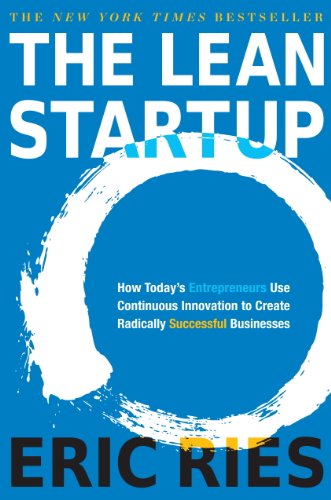

This article is an excerpt from the Shortform summary of "The Lean Startup" by Eric Ries. Shortform has the world's best summaries of books you should be reading.
Like this article? Sign up for a free trial here .
Does your startup need to pivot? Is it at the brink of failure, and you need to find a new business model or customer segment?
Figure out how to pivot your startup correctly in this guide from Lean Startup.
What is a Startup Pivot?
One of the hardest challenges you’ll face is deciding whether to continue in your current direction (persevere) or to change your fundamental hypothesis about your business (pivot).
The answer is often unclear because you will seldom encounter complete, abject failure. The more insidious state is when you’re barely limping along, not plummeting to the earth but also feeling like you’re not really making progress.
Pivot or Persevere Meeting
In The Lean Startup, Eric Ries recommends having a regular “pivot or persevere” meeting. The frequency should be between once every few weeks and once every few months, depending on your startup.
Pivot or Persevere meetings should involve product development and business leadership teams. The product team must report on its product optimization efforts over time, and the business team must report on their conversations with customers.
Why You’ll Pivot Too Late
Because your startup has limited money and time, startup pivots are necessary to find a new direction when you’re failing. Your startup’s runway is the number of pivots it can make – so it’s in your interest to get to the pivot point faster.
Yet many entrepreneurs who successfully pivoted which they had done so earlier. Why is it so hard to pivot?
- Vanity metrics delude entrepreneurs on how much progress they’re making.
- Startups lack clear hypotheses about what metrics they need to hit. This causes a “launch and see” approach that leads to complacency around whatever results you get.
- Entrepreneurs are afraid to reject an idea before it had a real chance to prove itself. This holds people back from launching bare-bones MVPs.
And yet the alternative is much worse – you run out of money and your company goes bankrupt.
Instead, you need to define what failure is in the context of your startup, and if you’re failing, it’s time to pivot or die.
Types of Startup Pivots
Pivots in startups come in multiple flavors. Which type you make depends on what you learn in your experiments about customer needs.
Zoom-in Pivot
Customers like a specific feature of your product. You pivot so your product now focuses entirely on delivering this feature.
Example: Justin.tv was a general live-streaming site, where anyone could stream whatever they were doing to an audience. They found that the most passionate users on their product were gamers streaming themselves playing videogames. Justin.tv pivoted to Twitch, a live-streaming site focused entirely on gaming.
Zoom-out Pivot
Your customers aren’t satisfied with the bare features in your product. You pivot your startup to expand the scope of your product and add many more features.
Customer Segment Pivot
You have the right product, but you’re solving it for the wrong people. You pivot to target this new type of customer. This can happen when you deplete your early adopter userbase and expand to mainstream users, who have different preferences.
Example: Foursquare is an app that lets users check into locations like restaurants and leave reviews. It was popular in the early 2010’s but fell out of favor with consumers. It pivoted to cater to enterprise customers and developers, who can use the trove of check-in data to run business analytics or power their own apps.
Customer Need Pivot
You know your customers well, and the problem you’re solving for them is not very important. You pivot your startup to target a new customer need, which may entail an entirely new product.
Example: Potbelly Sandwich Shop started as an antique furniture store that sold sandwiches to generate traffic. It realized that more people wanted their sandwiches than their furniture.
Example: Odeo was a podcasting platform company. As Odeo was failing, the staff held a last-ditch hackathon, where Twitter caught fire and spun out into its own company.
Platform Pivot
This can work in two directions. You have an application, but you realize you’d rather become a platform on which others can build their own products and applications. Or, you have a platform, but you realize you’d rather create a dedicated application that solves the end-user’s needs directly.
Example: Knewton was an education technology company building test prep programs that customized to the student. It pivoted to launch a general customization platform for schools developing their own online courses.
Business Architecture Pivot
You pivot your startup to change between two types of businesses: high margin and low volume, or low margin and high volume. This roughly matches to a business to business (B2B) model, or a business to consumer (B2C) model.
Example: In the 1970s IBM was the leader in enterprise mainframe computers, but the personal computer began disrupting the industry. After failing to dominate the PC market, IBM pivoted from hardware to provide software and consulting services, including the Watson AI platform.
Value Capture Pivot
You pivot your startup to make money a different way. For example, you realize that instead of selling your product, you can offer it for free and make money on ads or partnerships.
Example: Duolingo, a language learning app, was previously entirely free and made money through offering crowdsourced translation services. It introduced a subscription service that removes ads and allows offline use.
Engine of Growth Pivot
You pivot your startup to change how you grow – through virality, engagement, or paying to get users. Commonly, changing the engine of growth also requires a change in the way you capture value – for instance, going from a viral strategy to a paid marketing strategy may necessitate that you go from a free model to a paid model, to fund the marketing.
Channel Pivot
A channel is how customers get your product. For example, Johnson & Johnson uses pharmacies to reach customers, and app developers use Apple and Google’s app stores to reach users.
You pivot to deliver your product to users through a different channel. For example, at first you might think of building a product and listing it on Amazon to reach customers. You pivot to sell to customers directly through your own website, once you have the traction.
Example: Television shows were previously broadcast only on TV networks, which had specific properties limiting the content: advertisers were the main revenue source, so the shows couldn’t be too edgy; the network had limited time slots, so shows had to cater to the widest audience possible, diluting quality. With streaming platforms like Netflix and Amazon, show producers now have new channels to bring their content. Furthermore, because Netflix is supported by subscriptions and not advertisers, shows are not beholden to the same restrictions as in TV.
Technology Pivot
You want to solve the same problem for the same users, but you pivot to use a different technology to do so. Often, this offers better price or performance.
Example: Netflix started out by shipping DVDs in the mail. When bandwidth increased, they pivoted to offering streaming of content over the Internet.
Example: Wealthfront started as a virtual trading league for amateur investors. The idea was to identify the best traders through their virtual portfolios, and get customers to invest in those traders. After failures on both fronts, Wealthfront pivoted to build a platform for professional managers instead of amateurs. This wasn’t their last pivot, either – in a move taking place after The Lean Startup was published, Wealthfront is now a wealth manager itself, taking money directly from customers and investing it automatically through “robo-traders.”
Pivots are a natural part of business. You will almost certainly face less promising metrics than you had envisioned, and if you aren’t able to improve these, you will have to choose to pivot or die. Even when you reach success, you need to stay vigilant for changing market conditions that necessitate a pivot.
Pivots are not willy-nilly changes in direction. They are grounded in strategic hypotheses about how to build a better business, requiring target metrics and new minimum viable products.
———End of Preview———

Like what you just read? Read the rest of the world's best summary of "The Lean Startup" at Shortform . Learn the book's critical concepts in 20 minutes or less .
Here's what you'll find in our full The Lean Startup summary :
- How to create a winning Minimum Viable Product
- How to understand how your startup will grow
- The critical metrics you need to track to make sure your startup is thriving






